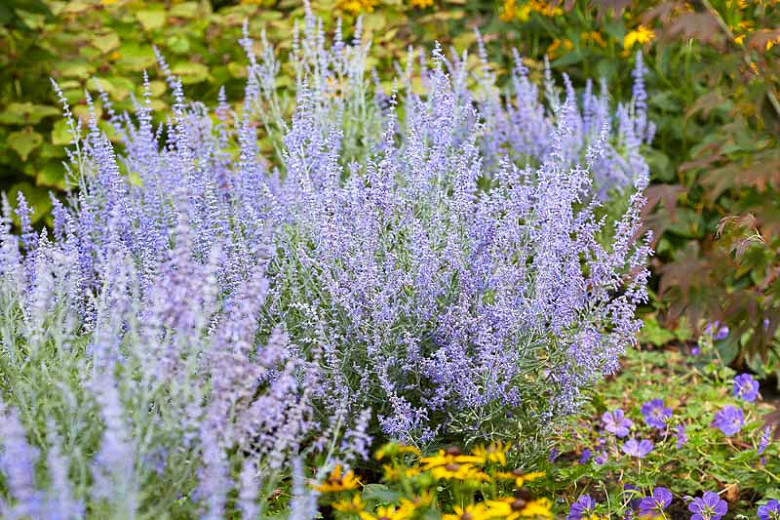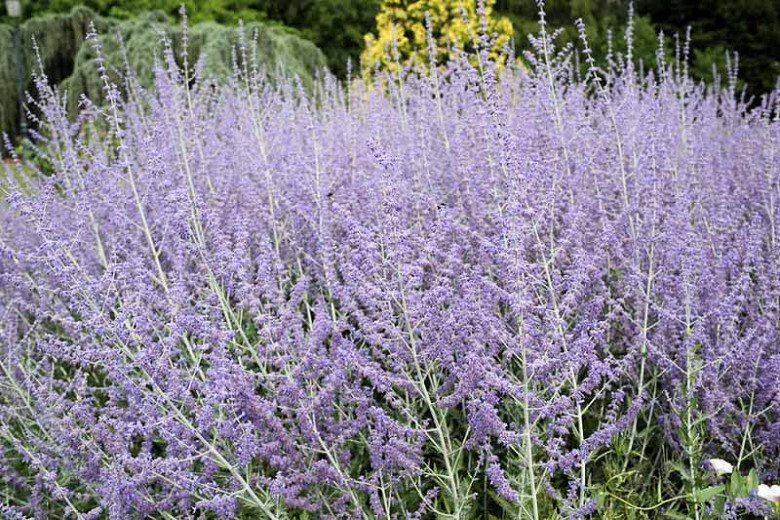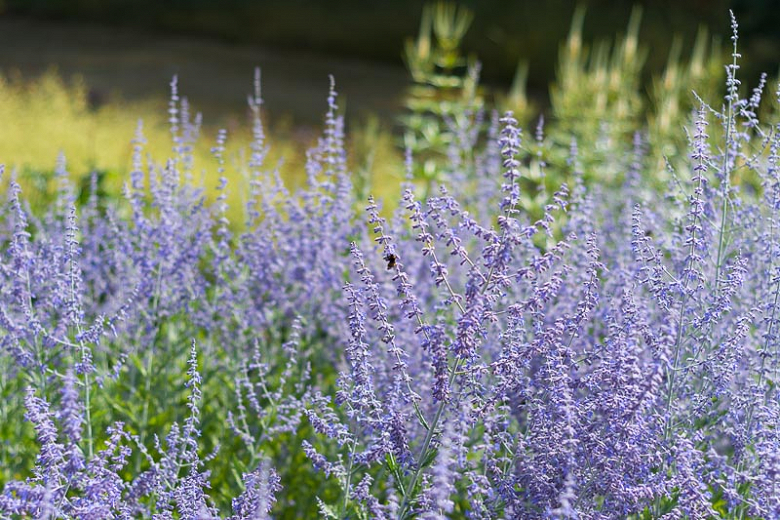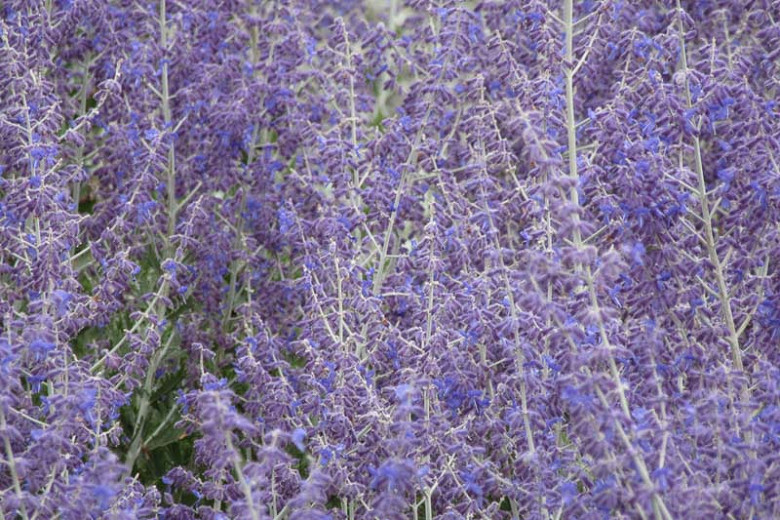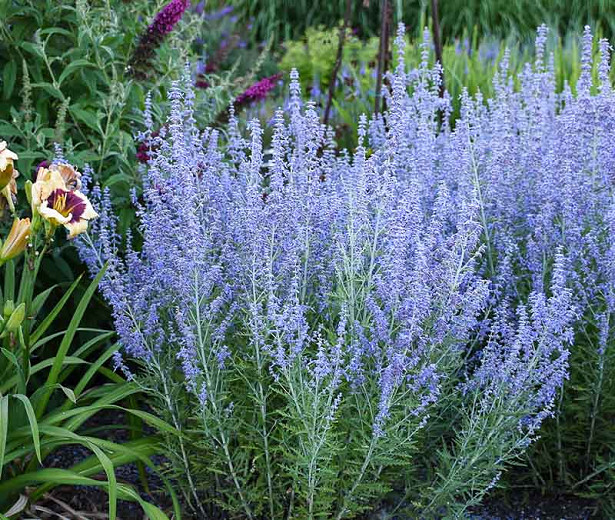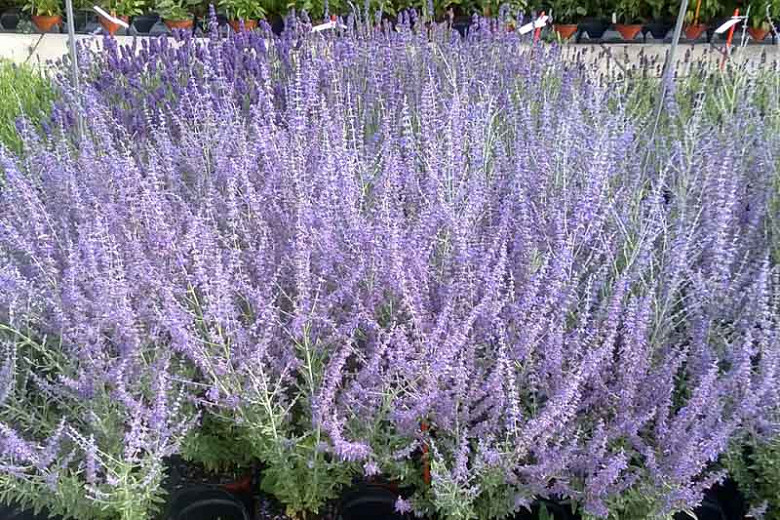Perovskia Lacey Blue (Russian Sage)
Perovskia Lacey Blue (Russian Sage) is a compact, deciduous sub-shrub with silvery stems bearing stiff upright spikes of relatively large, purple-blue flowers. Blooming for weeks from mid-summer to fall, the colorful blossoms attract pollinating bees and hummingbirds. The thin stems are clad with finely dissected, aromatic, gray-green leaves. Adding long-lasting color to the landscape, this delicate-looking plant is a toughy that is resistant to drought, heat and poor soils. Because of its aromatic foliage and woody stems, few pests, including deer, ever bother it. A perfect perennial for hot, dry climates that is also exceptionally cold hardy. Pretty and excellent for xeriscaping, its long blooming season makes it an extremely valuable addition to the garden – even in winter when the stems create a beautiful feature in the landscape.
- Typically grows up to 12-18 in. tall (30-45 cm) and 24-36 in. wide (60-90 cm).
- Performs best in full sun, in average, dry to medium, well-drained soils.
- Virtually pest and disease free. Drought and salt tolerant, deer and rabbit resistant.
- Attracts scores of butterflies and hummingbirds
- Russian Sage looks stunning in dry landscapes with other desert plants, in cottage or Mediterranean gardens, whether planted as singles or in clusters to intensify its presence, or even in a linear mass for knot gardens or small divider hedges. It associates wonderfully with other gray-leaved plants such as Lavender and contrasts beautifully with the bright colors of Echinacea (Coneflower), Helenium (Sneezeweed) and clump-forming grasses.
- Cut back plants almost to the ground in late winter to early spring as soon as new growth appears.
- Propagate by softwood cuttings in late spring or semi-ripe cuttings in summer
Requirements
| Hardiness | 4 – 9 |
|---|---|
| Heat Zones | 6 – 9 |
| Climate Zones | 2, 2A, 2B, 3, 3A, 3B, 4, 5, 6, 7, 8, 9, 10, 11, 12, 13, 14, 15, 16, 17, 18, 19, 20, 21, 22, 23, 24 |
| Plant Type | Perennials, Shrubs |
| Plant Family | Perovskia – Russian Sages |
| Exposure | Full Sun |
| Season of Interest | Summer (Mid,Late)Fall |
| Height | 1' – 2' (30cm – 60cm) |
| Spread | 2' – 3' (60cm – 90cm) |
| Spacing | 24″ – 36″ (60cm – 90cm) |
| Water Needs | Low |
| Maintenance | Low |
| Soil Type | Chalk, Loam, Sand |
| Soil pH | Acid, Alkaline, Neutral |
| Soil Drainage | Well-Drained |
| Characteristics | Cut Flowers, Fragrant, Showy |
| Tolerance | Deer, Drought, Rabbit, Dry Soil, Salt |
| Attracts | Bees, Butterflies, Hummingbirds |
| Garden Uses | Beds and Borders |
| Garden Styles | City and Courtyard, Gravel and Rock Garden, Informal and Cottage, Mediterranean Garden |
